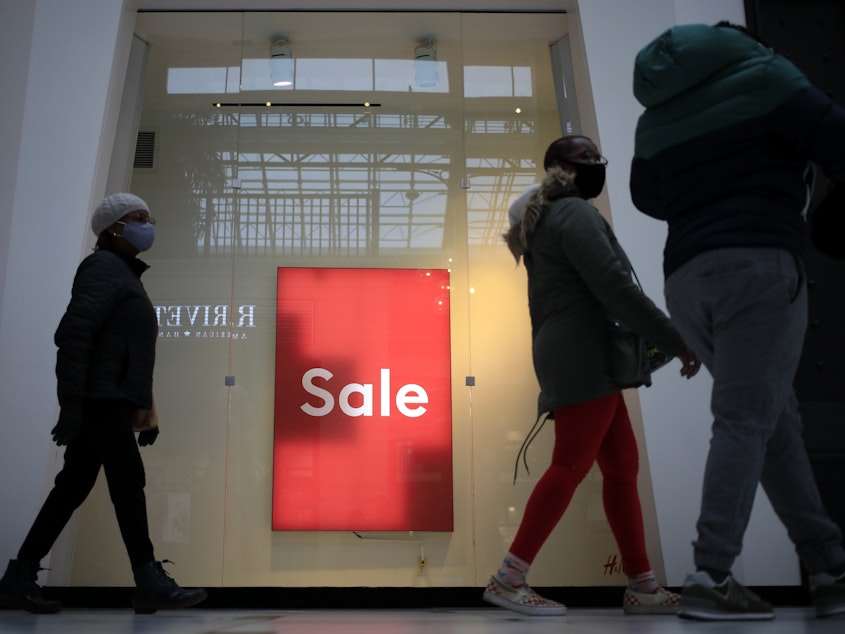Retail Spending Dips For 3rd Straight Month As Infections Surge

Restaurants and bars are reeling from persistent spikes of coronavirus cases and related restrictions, driving retail spending in December down for the third month in a row.
Updated at 9:07 a.m. ET
Even as people continue to splurge on shopping, they have cut back on going out to eat and shop. Plus, the earlier-than-usual holiday shopping season meant online shopping as well sales of electronics and appliances dipped in December. Gas stations saw the biggest jump in spending last month, up 6.6%, as people traveled for holiday visits despite health warnings.
Overall, retail sales last month fell 0.7% compared to November, although they were still higher than a year earlier, the Commerce Department said Friday. This measure is a major part of the U.S. economy, which continues to be battered by the pandemic. It includes spending on household goods, clothing and housewares as well as outlays on gasoline, cars, food and drink.
The economic downturn has been unusual because Americans have continued to buy and renovate homes, splurging online on devices, workout gear and pricey purchases such as appliances and furniture that drove a lot of 2020 spending.
Sponsored
"Even as households have lost jobs precipitously, money that was no longer being spent on services freed up budgets to spend on goods," researchers at the Federal Reserve wrote in a new note on Thursday.
U.S. retail sales recovered fairly quickly to surpass pre-pandemic levels last summer. Enhanced jobless benefits helped. And people substituted spending on travel and nights out with purchases of goods. Spending at restaurants and bars, meanwhile, was still down 21.2% in December compared to a year earlier.
Here's where people were spending in December, compared to November, according to the Commerce Department data:
Gas stations: +6.6%
Clothing and accessories stores: +2.4%
Sponsored
Home improvement and gardening stores: +0.9%
Sports, music and other hobby stores: -0.8%
Big-box stores: -1.2%
Grocery stores: -1.7%
Department stores: -3.8%
Sponsored
Restaurants and bars: -4.5%
Electronics and appliances stores: -4.9%
Online retailers: -5.8%
Shoppers also did some record-setting holiday shopping, with sales up 3% compared to 2019, according to Mastercard SpendingPulse. But it was a shopping season that began earlier than usual: Many retailers launched sales in October and November, spreading out the crush of spending that would ordinarily happen in December.
The National Retail Federation's latest economic review said the vaccine rollout plus a new round of federal financial relief holds high promise for spending at the start of the year, but added: "We don't expect economic activity to return to pre-pandemic levels until late 2021 and employment at those levels won't return until well into 2022 and possibly 2023."
Sponsored
In December, leisure and hospitality businesses lost almost half a million jobs, most of them in eating and drinking establishments. Despite solid job gains in the summer and early fall, the U.S. has so far recovered less than 56% of the jobs that were lost last spring.
NPR's Scott Horsley contributed to this report. [Copyright 2021 NPR]


